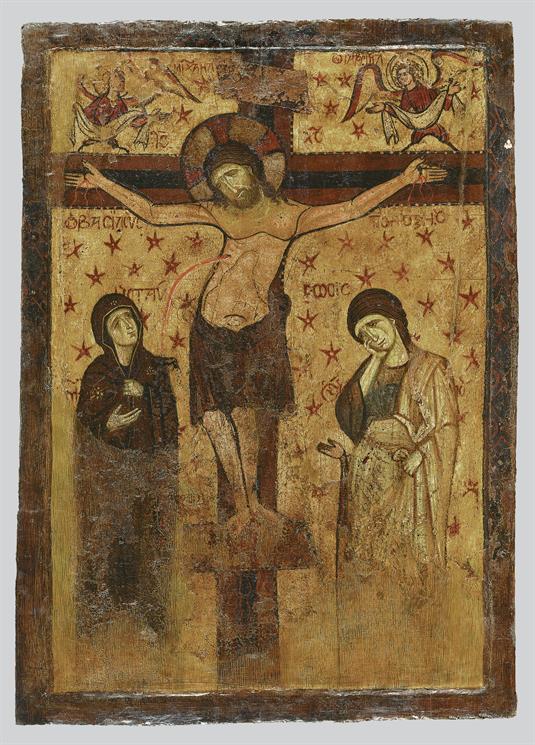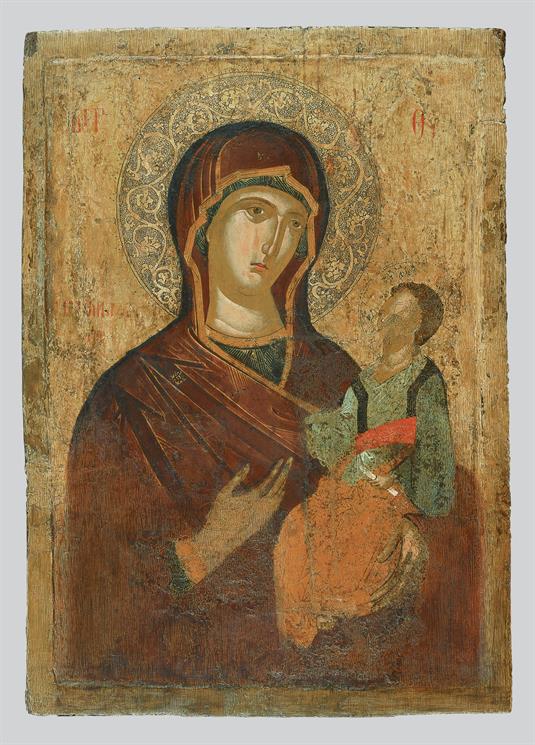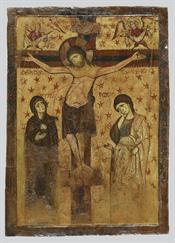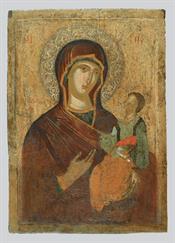Double-sided icon with the Crucifixion and the Virgin Hodegetria
The icon, which is the oldest in the museum, has three different layers of painting on the front. From the earliest, dating from the 9th c., is preserved the Cross, with the body of Christ, and the two angels. Traces can also be made out of John’s hand, in prayer, and a vessel at the Virgin’s left shoulder which was held by an angel symbolising the Church. The starry background and inscriptions were added in the 10th c. The Virgin, John and the head of Christ belong to the 13th-century phase of painting. X-ray examination of the icon has shown that the 9th-century Christ was painted with his eyes open, in other words alive on the cross. This was customary in earlier depictions of the Crucifixion in Byzantine art (6th and 7th c.), in order to emphasize the divine nature of Christ and his victory over death. But features dating to the 9th century refer to Christ's human nature, like the blood and the water that flow from Christ's side and are collected in a chalice (traces of which have been preserved on a level with the Virgin's shoulder). His human nature and the sacrifice the incarnate Christ made were stressed to a greater extent in the 13th century when the face of Christ was painted with closed eyes, as had become customary by then in Byzantine art.
On the reverse of the icon there was probably initially an image of the Virgin, which was over-painted in the 16th century with a Virgin and Child in the iconographic type of the Hodegetria.
- Collection: Icons and Wood-Carvings
- Measurement: 87 x 63 cm
- Exhibit Number: ΒΧΜ 00995
- Appears in: II.3. Worship and art




Comments
Users must be registered and logged in to comment.
No comments found.